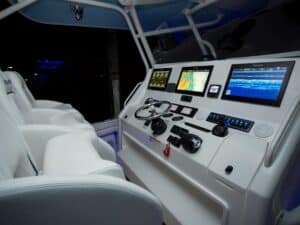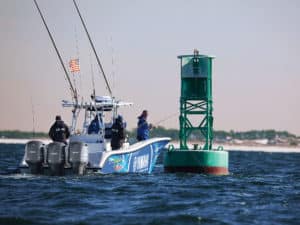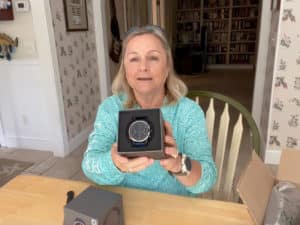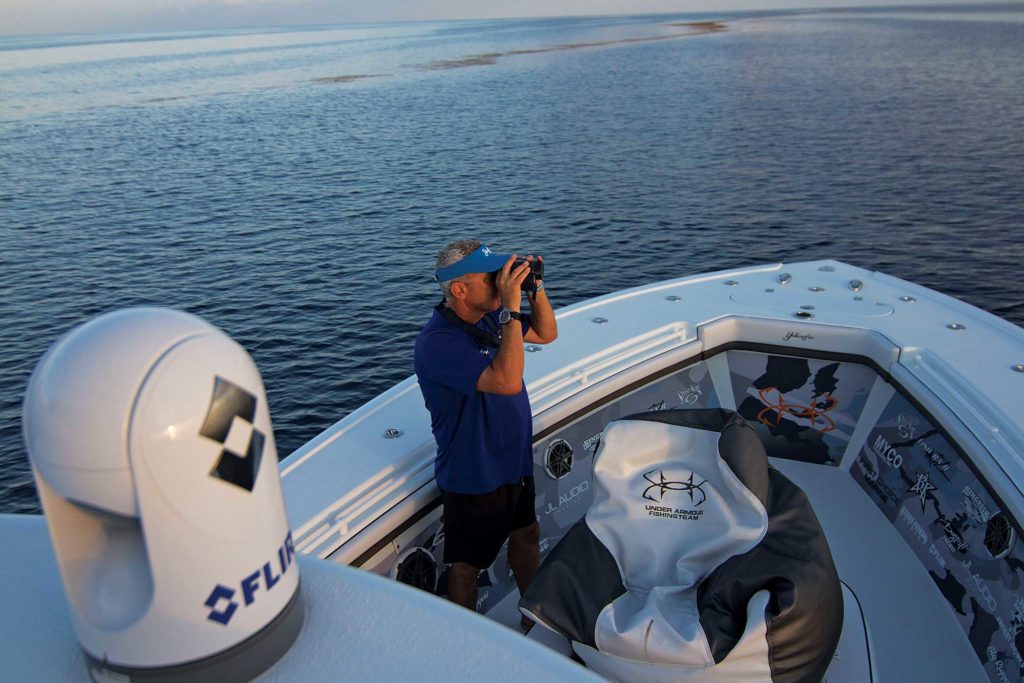
For more than a decade, FLIR Systems has built thermal cameras for the marine market. What was once considered luxury technology best-suited for the biggest oceangoing vessels and sport-fishers now finds purpose on boats of all sizes.
To be sure, thermal-imaging technology mainly assists with safety and navigation—at night and during the day. But it also helps find fish. To explore all of the ways this visual aid works for anglers, I spoke to FLIR/Raymarine marketing manager Jim McGowan. Here are his tips for when and how to best use thermal.
In Transit
Anglers leaving early from any East Coast port head directly into the rising sun as they run offshore. “The low sun reflecting off the water can create some very serious glare issues that make seeing objects ahead of the boat extremely difficult,” McGowan notes. “Since the infrared camera doesn’t see in the visible light part of the spectrum, it is immune to blinding solar glare.”
Keeping a thermal camera pointed ahead can help identify glare-obscured objects. However, running in rough sea conditions at even moderate speeds can reduce the effectiveness of thermal or visible-light cameras. Stabilized versions, such as the FLIR M625CS or M324S, employ a sensor that corrects for pitch, roll and yaw, and start at $8,995. (Stabilization also enhances digital- or optical-zoom capabilities, when available.)
Nonstabilized fixed-mount cameras, in particular, display bouncy scenes in rough seas. Using a handheld thermal camera (such as FLIR’s brand-new Scion Outdoor Thermal Monocular camera, starting at $3,295, or its existing Ocean Scout, starting at about $500) can help minimize this motion because it moves with the user. But with any visual aid—even binoculars—anglers can opt to slow down to take a quick look when necessary.
McGowan suggests that anglers also adjust their thermal cameras so the image is divided into ¼ sky and ¾ water. That helps in all circumstances regardless of sea conditions. “The reason for this [division] is the camera must auto-adjust to scale its available levels of color [or gray] across the range of temperatures in the scene,” he says. “The camera looks at the entire field of view—what’s coldest and what’s hottest—and it has so many colors to apply to the palette. If we can narrow the number of colors, we can apply more attention to what matters most.”
In many locations, anglers must negotiate an inshore mine field of lobster- and crab-pot buoys to gain access to offshore waters. Whether day or night, thermal cameras can help spot these potential hazards.
At night, a bright cityscape backdrop can destroy an angler’s night vision. “A low-to-the-water object such as a boat or jetty can blend in and become part of a sea of lights” that confuses the eye, he says. When FLIR looks over the scene, it doesn’t see the lighting, just the heat. “It will see the outlines of the buildings, but it doesn’t see traffic and city lights.”
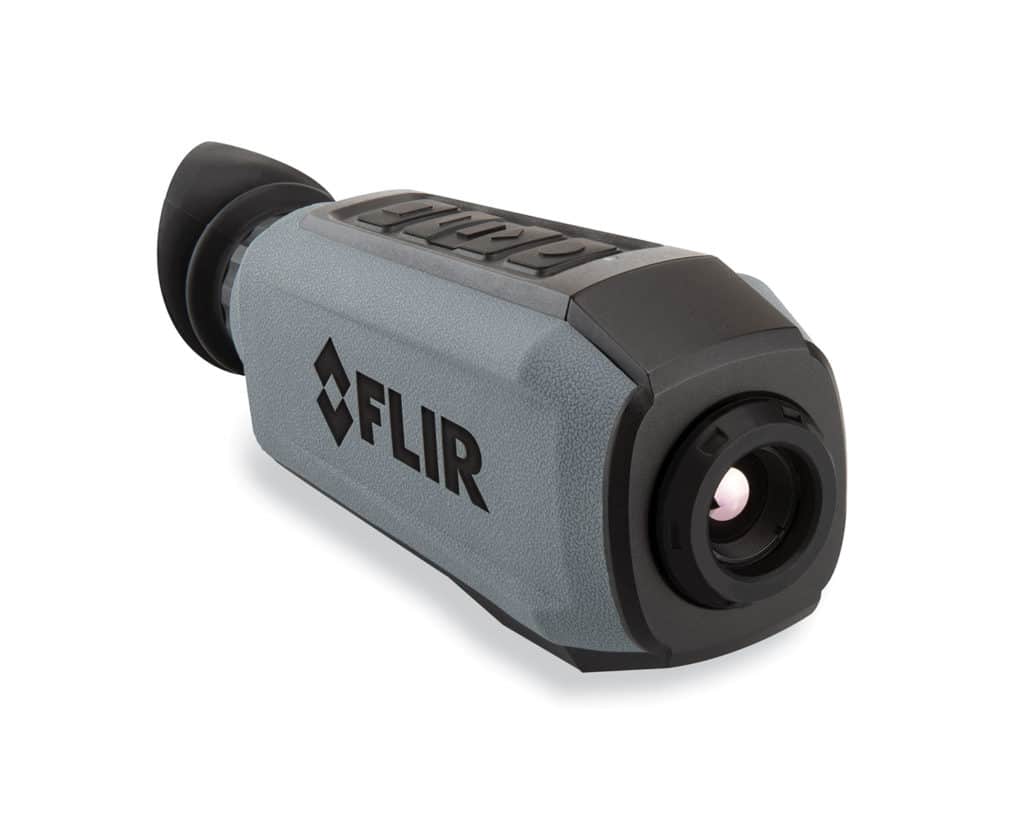
Finding Fish
Thermal cameras can register a temperature anomaly as small as a tenth of a degree. That difference becomes more pronounced offshore when the camera’s field of view fills with mostly water and sky. “This allows the camera to potentially see weed lines on the surface, as well as upwellings of warm or cold water,” McGowan says, also noting that the standard thermal-camera definition of 320-by-480 pixels allows about a quarter-mile to a half-mile of visibility (gauged in reference to seeing a human head above water), depending on the mounting height of the unit and on sea conditions.
Anglers can further improve what they see by using the camera’s high-contrast scene mode. This mode helps anglers looking for objects that are fairly close in temperature to the water itself.
FLIR also offers a daytime scene mode that’s helpful when the sun heats up everything, loading it with infrared energy. “The day palette has some preset parameters in it that help to regulate the image so it’s not overly rich with hot targets,” he says. “Another trick during daytime is to reverse the polarity of the image so it’s black-hot rather than white-hot. When using the grayscale palettes, this tends to make the image look more like a black-and-white visible-camera image, which is easier to interpret against the visible scene in front of your eyes.”
At night, however, McGowan recommends white-hot mode to pick out targets because virtually anything you want to know about is hotter than the water.
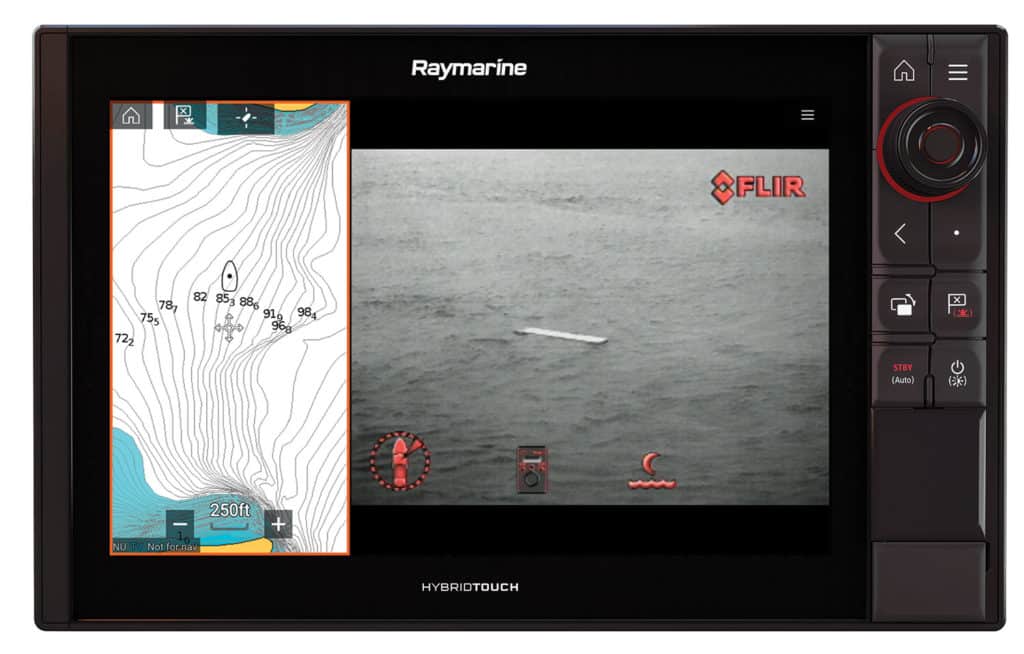
Extra Aids
McGowan listed several other thermal-camera advantages for navigating and fishing:
Slew to cue: FLIR marine thermal cameras work with multifunction displays from all of the big players such as Raymarine (owned by FLIR), Furuno, Garmin and Simrad. In many cases, these MFDs support advanced features that allow anglers to touch the chart or radar screen, prompting the camera to turn and look at the area touched. Slew to cue can visually identify AIS and radar contacts coming over the horizon, or lock the camera onto an object or a man overboard.
Augmented reality: Raymarine Axiom displays integrated with FLIR M132 and M232 cameras now support augmented-reality overlays. For example: If you look at a ship on the horizon, you can turn on AIS target tags and see that vessel’s name and other details. You can also see AR tags calling out buoys and markers in the camera’s field of view. AR waypoint overlay shows the bearing and distance to waypoints saved in your chart plotter that are in the camera’s field of view.
Read Next: FLIR ClearCruise AR
ClearCruise: Another Raymarine exclusive is ClearCruise Infrared Video Analytics. FLIR’s M132 and M232 cameras, when integrated with Axiom, can actively scan the camera’s field of view, looking for objects. ClearCruise analytics highlight with yellow brackets (and an optional audible beep) any detected hazards, including lobster pots, mooring balls, floating debris, rocks and even surfacing manatees. The system can also estimate the range to the target and show it alongside the bracket.
As costs continue to drop, thermal cameras could become as ubiquitous as VHFs and other common onboard gear. It’s also a good bet that anglers will continue to find new uses for this burgeoning marine technology.


